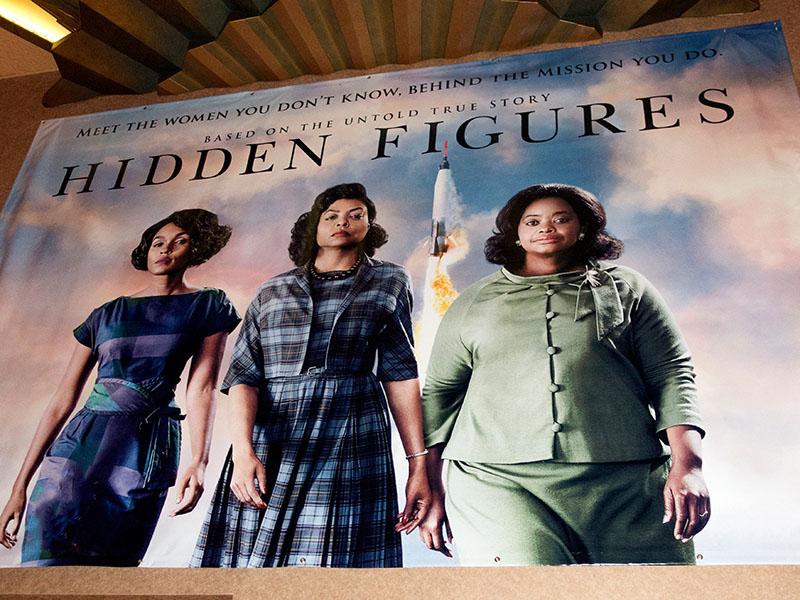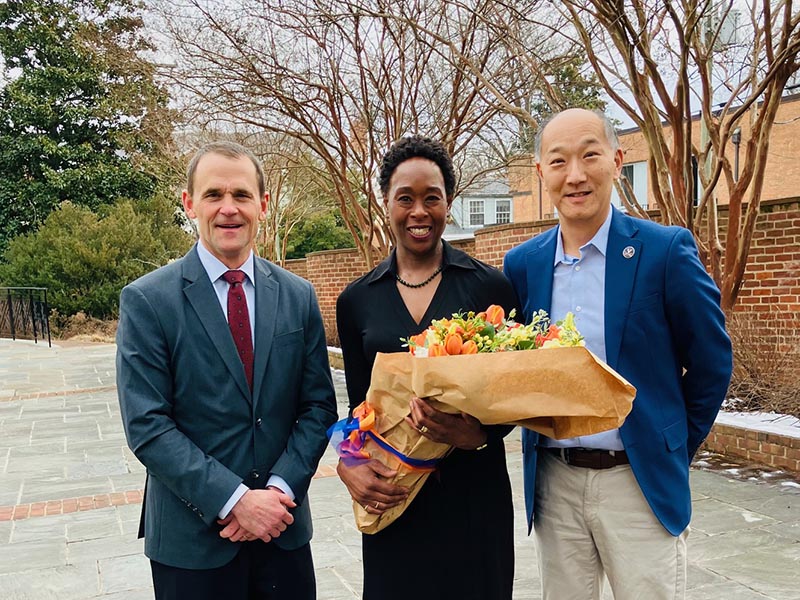Hidden Figures Author Partners with UVA to Document the Lives of “Human Computers”

UVA alumna Margot Lee Shetterly’s 2016 book “Hidden Figures: The American Dream and the Untold Story of the Black Women Mathematicians Who Helped Win the Space Race” tells the story of four women who worked as mathematicians and engineers at NASA, helping the agency fuel some of America’s greatest technological achievements at the height of the Civil Rights Era. This year, Shetterly has announced a partnership with UVA that will not only advance the historical research she began in writing Hidden Figures but will also create unique opportunities for both students and faculty at UVA who are interested in playing a supporting role in the project.
The four women profiled in her book, Shetterly said, are part of a larger group of thousands of women of all backgrounds who worked as human computers in virtually every aspect of organized research and development, technology and science during the 20th century.
The women played a critical role in research and technology at a time when computing was a product of pen and paper rather than laptops and when educational and professional opportunities were reserved almost exclusively for men.
“Computing done electronically today had to be done by hand back then,” Shetterly said. “In the early to mid-20th century, that was a female profession.”
Classified as clerical, non-professional work, computing jobs often attracted women who otherwise would have worked as math teachers in the public school system; however, Shetterly said, “The women who held these jobs were the ground force that powered a lot of the research and development in everything from aeronautics to astronautics, transportation to communications, and ballistics and military technology.”
Shetterly’s research for the book led her to launch the Human Computer Project to document the lives and the contributions these women made to the military and the many laboratories and federal agencies that employed them.
Instead of framing the issue as a problem in the culture of the workforce, Shetterly explained that the goal of the Human Computer Project is to focus on what the women were able to achieve.
“Why were there so many women in these jobs? What worked, and what do we learn from that?” Shetterly said. “Ultimately, it’s about gleaning some insight into the historical nature of women’s work in these fields and what insights that gives us for the future of the workforce.”
The work of identifying and researching the lives and accomplishments of hundreds of thousands of women across the country, however, is a big undertaking for one person.
A Virginia Story
On January 23, Shetterly received UVA’s Maxine Platzer Lynn Women’s Center’s 2023 Distinguished Alumna Award, an honor that recognizes women who have used their talents as a force for change. One of the first things she did when she learned she had been chosen to receive the award was reach out to Ken Ono, the College and Graduate School of Arts & Sciences’ Marvin Rosenblum Professor of Mathematics and STEM advisor to the office of the Provost at UVA.
“I’ve always known that I needed an institutional partnership to help move this project along, and I couldn’t think of a better partner than UVA,” Shetterly said. “This is fundamentally a Virginia story. The kernel of what would grow to become NASA began in Hampton, Virginia, so having a Virginia university to coordinate the effort was essential.”
Ono was instrumental in convincing the office of the University’s provost to partner with Shetterly to help advance the mission of the project, and this spring, Shetterly and Ono, along with Mar Hicks, an associate professor of data science with UVA’s School of Data Science, will work as co-directors of the Human Computer Project and will begin building a database of female professionals of all backgrounds who worked at NASA and its predecessor, the National Advisory Committee for Aeronautics, from 1935 to 1980. A later phase of the project will expand the database to include other governmental agencies as well as private industries, the military and academia.

The team have also begun a search for both students and faculty who are interested in joining the project and doing the groundwork of collecting biographical information about the women who played the role of human computers in the nation’s workforce and analyzing the impact their work has had. They’re looking for student interns in the STEM disciplines as well as students of history and the social sciences who either have good quantitative, writing and research skills, or an interest in developing those skills. The most important qualification, however, is an interest in the work and the importance of the project.
“It’s tremendously satisfying work, the combination of storytelling, archival research, oral history collection, writing and the ability to understand the research the women produced,” Shetterly said.
“This is research that matters, and it’s an extraordinary opportunity for UVA’s students and faculty,” Ono said. “Part of my job in the provost’s office is to support STEM initiatives, and I’m a strong advocate for research like this.”
UVA will be the flagship site of a work model that can be duplicated at other universities. Shetterly is also looking to partner with a major museum to house the project’s archives.
“There’s already been significant interest,” Shetterly said.
The partnership has also drawn praise from UVA President Jim Ryan.
“I’m grateful for Margot’s work, which has already done so much to unearth the untold stories of women who were essential to some of history’s most exciting moments in space exploration,” Ryan said. “I’m also delighted that Margot will be expanding her work here at UVA and that students and faculty will have the chance to help recognize many more women and tell a more complete story of our nation’s history.”
Students and faculty interested in opportunities to join the Human Computer Project can find more information on the project’s website.








